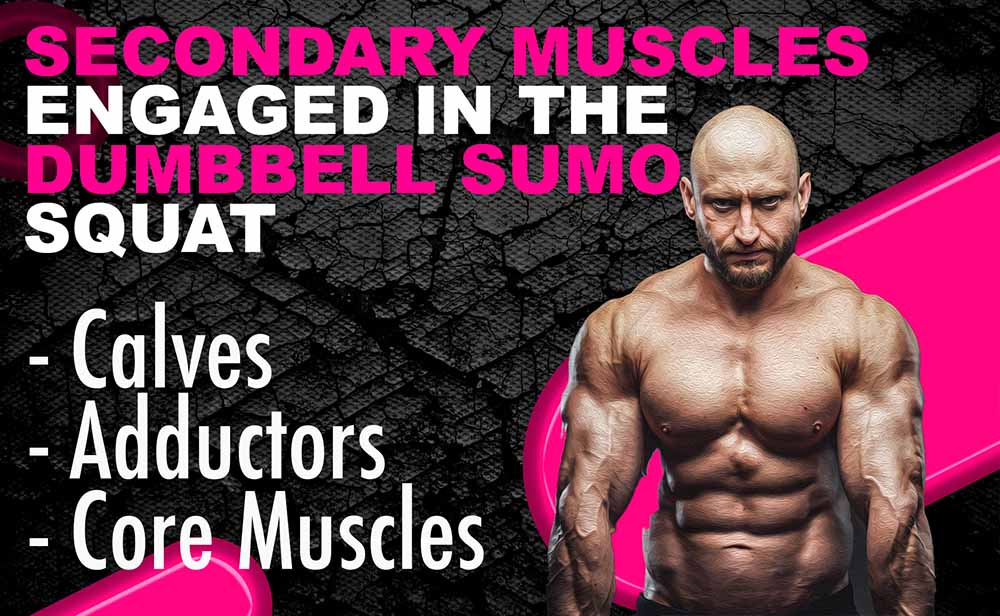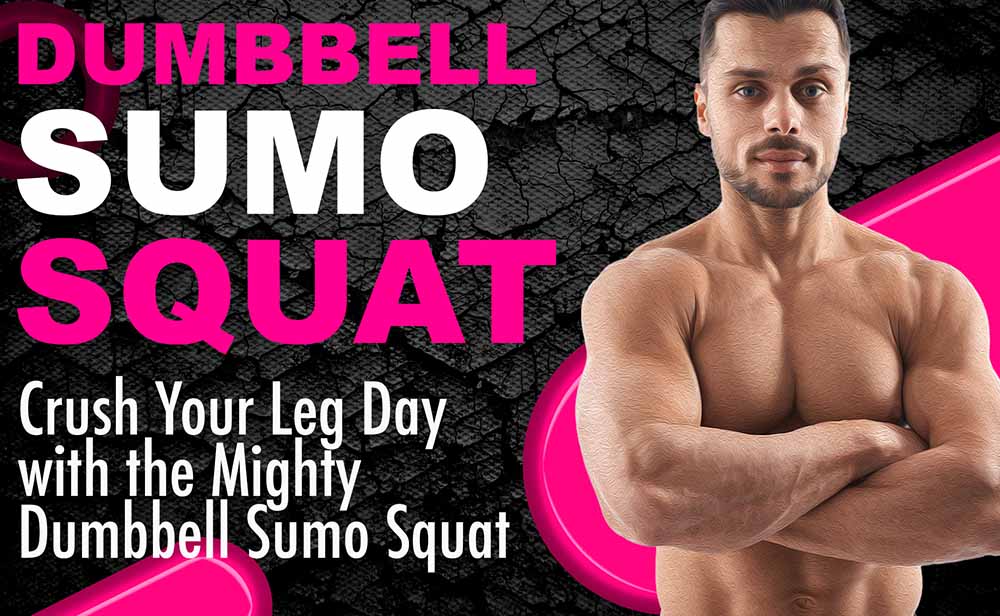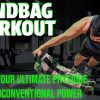Dumbbell Sumo Squat: Crush Your Leg Day with the Mighty Dumbbell Sumo Squat
This exercise not only targets your primary lower body muscles but also activates secondary muscles, enhancing their development. Whether you choose the dumbbell variation over the barbell option or experiment with advanced variations like split stance or resistance band-assisted squats, the possibilities for customization and progression are endless.
What is a Dumbbell Sumo Squat?
With Dumbbell Sumo Squat, you’ll be able to challenge your lower body muscles while also engaging your core. It’s important to use proper form during this exercise by keeping your knees in line with your toes and avoiding rounding your back. This will reduce your risk of injury while performing this exercise correctly. Additionally, you can use various dumbbell weight sizes to increase or decrease the intensity of the exercise, making it easy to customize for differing fitness levels and goals.
How to Perform the Dumbbell Sumo Squat Correctly
Are you ready to learn how to execute the Dumbbell Sumo Squat flawlessly? Follow this step-by-step guide to ensure you get the most out of this powerful leg exercise.
Step-by-Step Guide to Executing a Perfect Dumbbell Sumo Squat
- Start by standing with your feet wider than shoulder-width, and your toes pointing outwards. Hold a dumbbell firmly with both hands, placing it in front of your body with your arms straight down.
- Keep your back straight and chest up, engaging your core. This will help maintain proper form throughout the exercise.
- Lower your body down into a squat position, bending your knees while keeping them in line with your toes. Aim to bring your thighs parallel to the ground or lower if possible.
- Push from your heels and engage your glutes and thigh muscles as you rise to the starting position, and fully extend your legs.
- Repeat the motion for the desired number of repetitions, ensuring a controlled and slow movement to maximize effectiveness.
- Remember to breathe consistently throughout the exercise, inhaling as you lower your body and exhaling as you rise back up.
Common Mistakes to Avoid During Dumbbell Sumo Squats
While performing the Dumbbell Sumo Squat, it’s important to be aware of common mistakes that can hinder your progress and potentially lead to injury. By avoiding these errors, you’ll ensure proper form and make the most out of your workout.
- Avoid letting your knees cave inwards as you descend into the squat. Instead, focus on pushing them outwards, in line with your toes. This will activate the correct muscles and provide stability.
- Don’t round your back by hunching forward. Maintain a straight back and keep your chest up throughout the entire movement. This will help protect your spine and engage your core muscles.
- Don’t rush through the exercise. Take your time and perform each repetition with control. This will engage your muscles more effectively and reduce the risk of injury.
- Avoid using excessive weight that compromises your form. It’s better to use a weight that allows you to perform the exercise correctly rather than one that forces you into incorrect positions.
By being mindful of these common mistakes, you’ll be on your way to mastering the Dumbbell Sumo Squat and reaping the full benefits it offers. Remember, proper form is key to ensuring a safe and effective workout.
Comparing Sumo Squat with Dumbbell to Barbell Sumo Squat
Are you torn between the Dumbbell Sumo Squat and the Barbell Sumo Squat? Let’s compare these two variations to help you decide which one is right for you.
Pros and Cons of Dumbbell Sumo Squat
The Dumbbell Sumo Squat has its own set of advantages and disadvantages that you should consider when incorporating it into your workout routine.
Pros:
- Versatility
- You can easily adjust the weight by choosing different dumbbell sizes, allowing you to customize the intensity of the exercise based on your fitness level and goals.
- Core Engagement
- Holding the dumbbell in front of your body during the exercise requires additional core engagement to maintain stability and balance, resulting in improved core strength over time.
- Individual Arm Strength
- Since you’re using separate dumbbells for the exercise, you have the opportunity to work on individual arm strength and address any muscle imbalances that may exist.
Cons:
- Limited Weight Progression
- Unlike a barbell, which allows for more weight to be added, dumbbells may not be suitable for those looking to continuously increase resistance over time.
- Grip Limitations
- Holding dumbbells can be challenging for individuals with grip strength limitations. This can potentially limit their ability to perform the exercise with heavier weights.
Pros and Cons of Barbell Sumo Squat
Just like its Dumbbell counterpart, the Barbell Sumo Squat has its own set of pros and cons.
Pros:
- Weight Progression
- One significant advantage of the Barbell Sumo Squat is the ability to progressively increase the weight. As you become stronger, you can easily add more weight plates to the barbell.
- Stability
- The barbell rests on your upper back and shoulders, providing a solid base for the exercise. This stability can be particularly beneficial when handling heavier weights.
- Full-Body Involvement
- The Barbell Sumo Squat engages a larger number of muscle groups compared to the Dumbbell variation. It places greater emphasis on the posterior chain, including the glutes, hamstrings, and lower back. This comprehensive engagement contributes to overall strength development.
Cons:
- Equipment Requirement
- It require access to a barbell and a power rack or squat stand. If you’re working out at home and don’t have this equipment, it may be impractical to incorporate this variation into your routine.
- Limited Core Activation
- While the Barbell Sumo Squat involves multiple muscle groups, it places less direct emphasis on core activation compared to the Dumbbell variation.
- Muscle Imbalance Challenges
- Unlike the Dumbbell Sumo Squat, the Barbell variation doesn’t allow for independent arm movement. This limitation may not be ideal if you’re aiming to address and correct muscle imbalances between your arms.
When to Choose the Dumbbell Variation Over the Barbell Variation
Understanding when to choose the Dumbbell Sumo Squat over the Barbell Sumo Squat is essential for maximizing your workout effectiveness and achieving your fitness goals.
Consider these factors when deciding to opt for the Dumbbell Variation:
- Home Workouts
- If you prefer working out at home and don’t have access to a barbell or a full home gym setup, the Dumbbell Sumo Squat is a great alternative. Dumbbells are more accessible and can be easily incorporated into home workout routines.
- Core Strength Focus
- If you’re specifically aiming to improve your core strength along with leg muscles, the Dumbbell Sumo Squat is an excellent choice. The added challenge of holding the dumbbell in front of your body engages your core muscles more effectively.
- Individual Arm Development
- If you’re looking to address any muscle imbalances or focus on improving individual arm strength, the Dumbbell Sumo Squat allows you to work each arm independently.
Always remember, the choice between the Dumbbell Sumo Squat and Barbell Sumo Squat depends on your preference, access to equipment, and specific training goals. Experiment with both variations to find what works best for you and brings you closer to achieving your fitness aspirations.
Sumo Squat Muscles Worked
When it comes to targeting the lower body, the Sumo Squat reigns supreme. This compound exercise primarily focuses on strengthening and activating key muscles in the lower body, helping you build a strong foundation and improve overall leg strength.
Targeted Muscles:
- Quadriceps
- The quads, which are located on the front of your thighs, play a significant role in the Sumo Squat.
- As you descend into the squat position, your quads contract to provide stability and power throughout the movement.
- Strengthening your quads can improve your ability to perform everyday activities and sports that require explosive leg power.
- Glutes
- The three major glutes muscles are heavily engaged in sumo squats; gluteus maximus, gluteus medius; and gluteus minimus.
- These muscles work together to extend the hips and provide stability during the exercise.
- Strengthening your glutes not only enhances your athletic performance but also helps maintain proper posture and reduces the risk of lower back pain.
- Hamstrings
- Located at the back of the thighs, the hamstrings also play a crucial role in the Sumo Squat.
- They assist in hip extension and knee flexion during the upward movement.
- Strengthening the hamstrings can help improve athletic performance, reduce the risk of hamstring injuries, and promote balanced muscle development in the lower body.
Secondary Muscles Engaged in the Dumbbell Sumo Squat

While the Sumo Squat primarily targets the lower body, it also engages several secondary muscles, working in synergy to improve your strength and stability.
- Calves
- The calf muscles, including the gastrocnemius and soleus, act as stabilizers during the Dumbbell Sumo Squat.
- Although they don’t play a primary role in the movement itself, they help maintain balance and stability throughout the exercise.
- Strengthening the calves can improve ankle stability and overall lower leg strength.
- Core Muscles
- Holding the dumbbells in front of your body during the Dumbbell Sumo Squat engages the core muscles, including the rectus abdominis, obliques, and transverse abdominis.
- These muscles work to stabilize your torso and maintain proper posture throughout the movement.
- Developing a strong and stable core can improve your overall athletic performance and reduce the risk of lower back injuries.
- Adductors
- Situated on the inside of the thighs, the adductor muscles, such as the adductor brevis, adductor longus, and adductor magnus, assist in hip stabilization during the Dumbbell Sumo Squat.
- These muscles play a role in adduction, the movement of bringing the thighs together.
- Strengthening the adductors helps improve overall leg stability and mobility.
Exploring Alternatives: Split Stance Dumbbell Sumo Squat
If you’re looking to switch up your Dumbbell Sumo Squat routine, the Split Stance variation is worth exploring. This alternative not only challenges your lower body muscles in a different way but also improves your balance and stability.
How to Perform:
- Start by standing with your feet wider than shoulder-width apart and toes pointed outwards as in a traditional Sumo Squat.
- Take a step forward with one foot and position it in front of you, creating a split stance.
- Hold a dumbbell on each hand, by your sides, with palms facing your body.
- Keeping your back straight and core engaged, lower your body down into a squat position. Ensure that both knees are bent at approximately a 90-degree angle.
- Push through the heels and return to the starting position.
Benefits:
- Increased Stability: The Split Stance Dumbbell Sumo Squat challenges your balance and stability by placing your body in an uneven stance. This variation requires greater core activation and strengthens the muscles responsible for stability, improving your overall functional fitness.
- Unilateral Strength Development: By performing the Split Stance Dumbbell Sumo Squat, you’re engaging each leg independently. This helps address any muscle imbalances that may exist between the left and right leg, leading to more balanced strength development.
- Improved Range of Motion: The Split Stance variation allows you to achieve a deeper squat position, enhancing the range of motion in your hips and activating different muscle fibers. This can lead to increased flexibility and improved overall leg strength.
Leveling Up: Adding Resistance Bands to Dumbbell Sumo Squats
To take your Dumbbell Sumo Squat workout to the next level, consider incorporating resistance bands into your routine. This simple addition can increase the intensity of the exercise and help you build even more lower body strength.
How to Perform:
- Begin by securing a resistance band under both feet, ensuring it is stretched to an appropriate level of resistance.
- Hold a dumbbell in each hand, by your sides, with palms facing your body.
- Assume the Sumo Squat position, with your feet wider than shoulder-width apart, toes pointed outwards, and knees slightly bent.
- While maintaining the proper squat form, lower your body down, bending your knees and pushing your hips back.
- As you rise back up to the starting position, focus on pressing your knees out against the resistance of the bands, engaging your glutes and outer thighs even more.
Benefits:
- Increased Resistance: By adding resistance bands to your Dumbbell Sumo Squats, you’re providing an additional challenge to your muscles. The bands create tension throughout the movement, making your muscles work harder and promoting greater strength gains.
- Targeted Muscle Engagement: The resistance bands specifically target the glutes and outer thigh muscles, known as the abductors. By activating these muscles to a greater extent, you can enhance the overall shape and tone of your legs while developing functional strength.
- Improved Stability: The resistance bands not only increase resistance but also provide a stabilizing force as you perform the Dumbbell Sumo Squat. This can help you maintain proper form, engage your core, and prevent potential muscle imbalances or injuries.
How Dumbbell Sumo Squats Can Help Improve Functional Movements
When it comes to strength training, it’s crucial to choose exercises that enhance functional movements, which are movements that the body naturally performs in daily life. Dumbbell Sumo Squats are a fantastic exercise that can help improve functional movements in numerous ways.
Enhancing Balance and Stability through Dumbbell Sumo Squats
By standing with a wide stance and feet turned out, you’re engaging the muscles in your hips, glutes, and quads. These muscles are essential for maintaining balance and stability when walking, running, or performing any other physical activity.
Moreover, holding the dumbbells during the exercise also challenges the upper back and core muscles to maintain stability. This, in turn, develops functional strength, allowing you to perform daily activities with greater ease and confidence.
Transferring Strength Gained from Dumbbell Sumo Squats to Daily Activities
Performing Dumbbell Sumo Squats can help improve functional movements such as walking, running, squatting, and bending down to pick things up making you more flexible and at ease in doing the mentioned activities.
Precautions and Safety Tips for Dumbbell Sumo Squats
Dumbbell Sumo Squats are a fantastic exercise for strengthening your lower body muscles. However, like any exercise, it’s essential to take precautions and prioritize safety to minimize the risk of injury.
Warming Up and Stretching Before Dumbbell Sumo Squats
Before diving into your Dumbbell Sumo Squat workout, it’s crucial to warm up your muscles and perform some stretching exercises. Warming up and stretching prepares your muscles for the workout ahead, increases blood flow, and decreases the risk of injury.
- Start with a light cardio activity, such as jogging or jumping jacks, for about 5-10 minutes to increase your heart rate and warm up your entire body.
- Then, focus on stretching the muscles you will be targeting during the Dumbbell Sumo Squats, such as the hips, glutes, and quads.
- Perform dynamic stretches that involve moving parts of your body through a full range of motion to improve flexibility and joint mobility.
Listening to Your Body: Avoiding Overexertion and Injury
One of the most critical aspects of any exercise is to listen to your body and avoid overexertion. Pushing yourself too hard or ignoring warning signs can lead to injuries that may set you back in your fitness journey.
- Pay attention to any pain or discomfort in your joints, muscles, or lower back during Dumbbell Sumo Squats. If you experience sharp or intense pain, it’s essential to stop the exercise.
- Additionally, consider starting with lighter dumbbells and gradually increasing the weight as your strength improves. This progressive approach helps prevent strain and ensures that you’re challenging your muscles in safe and effective ways.
Nutrition Tips to Maximize the Benefits of Dumbbell Sumo Squats
A well-rounded exercise routine not only involves physical training but also pays attention to nutrition. When it comes to getting the full gists of Dumbbell Sumo Squats, fueling your body with the right nutrients is essential.
Fueling Your Body for Optimal Performance in Sumo Squats
Focus on consuming a balanced meal that includes compound carbohydrates, lean proteins, and healthy fats.
- Complex carbohydrates, such as whole grains, fruits, and vegetables, provide a steady source of energy to power you through your workout. They also support muscle glycogen stores, which are essential for sustained exercise performance.
- Lean proteins, such as chicken, fish, or tofu, support muscle repair and growth, ensuring that your muscles stay strong and recover well.
- Include healthy fats, like avocados or nuts, in your pre-workout meal to provide additional energy and support joint health.
- Hydration is also key before a workout. Drink enough water throughout the day to stay properly hydrated and consider having a small amount of water or a sports drink before exercising to replenish electrolytes.
Post-Workout Nutrition to Aid Recovery and Muscle Growth
Consuming a combination of carbohydrates and proteins within the first hour after exercise can help replenish muscle glycogen stores and support muscle repair.
- Include a source of carbohydrates, such as whole grain bread or fruits, to replenish energy stores and promote glycogen synthesis.
- Pair it with a protein source, like Greek yogurt or a protein shake, to provide the necessary building blocks for muscle repair and growth.
- Remember to hydrate post-workout as well. Drink water or a sports drink to restore fluid balance and aid in the removal of metabolic waste products.
FAQs About Dumbbell Sumo Squats
Dumbbell Sumo Squats are an effective exercise for targeting the lower body muscles, but it’s common to have questions about how to perform them correctly and the benefits they offer.
-
How do I perform Dumbbell Sumo Squats?
To perform a Dumbbell Sumo Squat, stand with your feet wide apart and toes pointing slightly outward. Hold a dumbbell in each hand and let them hang by your sides. Lower your body by bending at the hips and knees, keeping your back straight. Go as low as you can while maintaining proper form, then push through your heels to return to the starting position.
-
How heavy should the dumbbells be?
The weight of the dumbbells depends on your fitness level and experience. Start with a weight that allows you to perform the exercise with proper form and without straining. You can gradually increase the weight as you get stronger.
-
Are Dumbbell Sumo Squats harmless for the knees?
Dumbbell Sumo Squats are generally safe for the knees when executed with proper form. Make sure your knees are aligned with your toes and avoid letting them collapse inward. If you have knee issues or concerns, consult with a healthcare professional before attempting this exercise.
-
How many sets and reps should I do?
The number of sets and reps will depend on your fitness goals. A common approach is to start with 2-3 sets of 10-12 reps and adjust as needed. Increase the weight or reps as you progress to continue challenging your muscles.
Conclusion: Crush Your Leg Day with the Mighty Dumbbell Sumo Squat
In conclusion, Dumbbell Sumo Squats are a highly effective exercise for targeting the lower body muscles, including the glutes, hamstrings, quadriceps, and inner thighs. By using dumbbells, you can increase the resistance and challenge your muscles even further, promoting strength and muscle growth.
Performing Dumbbell Sumo Squats with proper form is crucial to avoid injury and maximize the benefits. Remember to keep your back straight, knees aligned with your toes, and push through your heels to activate your target muscles effectively.
Remember, consistency, proper form, and a balanced approach to fitness will help you maximize the benefits of Dumbbell Sumo Squats in achieving your fitness goals.



